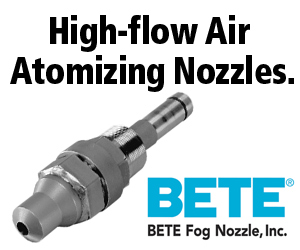
Probably, you have heard about Wet Aluminia Trihydrate. This type of Feed was difficult to process by regular handling. This article might help for those you re-design their feed tank for this mixture.
Preface
Alumina trihydrate is used in the manufacture of aluminum chemicals such as aluminum sulfate, aluminum chloride, aluminum fluoride, and sodium aluminate. It is also used as a fire retardent and flame suppressant filler in plastics, a polishing agent, and as a raw material in catalyst and zeolite production.
The Solution
Herman Purutyan, a senior project engineer with Jenike & Johanson, initially made a site visit to discuss the project plans, review the processing conditions and handling requirements, and see the material. The next step was to test a sample of the alumina trihydrate in our lab, duplicating the process conditions.
He found that the wet cake is cohesive enough to arch and form stable ratholes in funnel flow silos. Funnel flow is defined as the flow pattern where during discharge some of the contents in a silo remain stationary, while some move. Product flow takes place in a channel located above the outlet. Once this channel is emptied, if the material is cohesive, a stable rathole forms and discharge stops. In addition to this "no-flow" condition, funnel flow can result in product caking in the stagnant areas, reduced silo capacity (to that of the rathole), and structural damage due to asymmetric loads and high impact loads caused by collapsing ratholes.
Problems associated with funnel flow can be avoided by ensuring that a mass flow pattern develops in a silo. Mass flow is defined as the flow pattern where, upon withdrawal of any material, all of the contents of a silo move. To achieve mass flow, the sloping hopper walls must be steep enough and have sufficiently low friction to allow the material to flow along them. In addition, the outlet size of the hopper must be large enough to prevent arching.
For this particular application, he determined that a third flow pattern, expanded flow, would be most suitable. Expanded flow combines mass flow and funnel flow, and consists of a mass flow section at the bottom of the silo, extending up to a large enough diameter to prevent the formation of a rathole. Above this mass flow section, the silo is designed for a funnel flow pattern.
The ability of a material to form a stable rathole is a function of its cohesive strength. There is a maximum rathole diameter, DF (determined from tests), beyond which a rathole becomes unstable. In an expanded flow silo, the flow channel is forced to be larger than DF by using a mass flow hopper with a top diameter larger than DF. Although flow in the upper section will be funnel flow, the silo can be emptied since a stable rathole cannot form.
 Herman recommendation for the expanded flow silo is shown in the figures. A mass flow screw feeder was recommended for discharging material from the silo. In order to achieve mass flow in the transition hopper, the feeder was designed to withdraw material uniformly from the entire outlet of the hopper. This was achieved by ensuring that the capacity of the feeder is increased in the direction of flow.
Herman recommendation for the expanded flow silo is shown in the figures. A mass flow screw feeder was recommended for discharging material from the silo. In order to achieve mass flow in the transition hopper, the feeder was designed to withdraw material uniformly from the entire outlet of the hopper. This was achieved by ensuring that the capacity of the feeder is increased in the direction of flow.With mass flow occurring in the lower section of the silo, alumina trihydrate will flow along the hopper walls. Wear was a concern, as alumina trihydrate is an abrasive material. They conducted tests to measure abrasive wear on the selected hopper wall surface, and we calculated the wear life of the hopper walls at the critical areas where high loads and/or high flow rates occur. We found that the alumina trihydrate is not very abrasive on the recommended wall material, so the selected wall surface will last for many years.
The engineers also calculated pressures exerted on the silo walls by the stored bulk solid. They analyzed two different conditions: loads applied after the initial filling of the silo, prior to any material discharge, and loads after material has started to discharge (flow loads). Many people assume hydrostatic pressures for bulk material loading; however, this is generally not the case. The result can be inaccurate load assumptions at critical areas in the silo.










